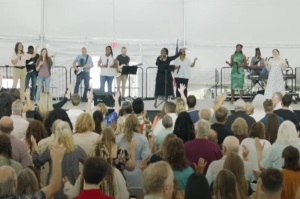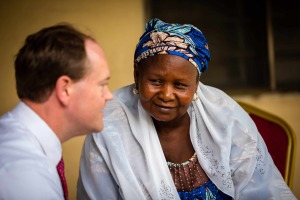Percentage of Christians, Americans Who Have Read 'Fifty Shades of Grey' the Same
A new study has revealed there is no difference between the percentage of Christians who have read Fifty Shades of Grey and the percentage of all Americans who have read the book, which has at times been described as "mommy porn."
According to Barna Group researchers, nine percent of practicing Christians have read E.L. James' erotic novel, and the same percentage of all American adults have done the same. Sixteen percent of women have read the bestseller, which was more popular among older readers – one out of ten of both Busters (ages 29-47) and Boomers (ages 48-66) say they have read the book. Among those adults who read Fifty Shades, one-in-five (19 percent) were practicing Christians.
Barna Group surveyed 1,075 American adults in January to find out who is reading some popular titles. For the purpose of the research, "practicing faith Christians" were those who self-identified as Christian or Catholic, who had attended a church service in the last month and who strongly agreed that their faith is "very important" to them.
In other findings, the research revealed that one-in-five American adults, including 61 percent of evangelical Christians, have read the Bible from beginning to end. Eighteen percent of people from other faiths and nine percent of those who claim no faith also say they have read the Christian scriptures the whole way through.
"It is not a surprise that so many practicing Christians report reading their primary sacred text from front to back," wrote David Kinnaman, president of Barna Group, in an analysis of the data. "It is surprising that nearly a fifth of people who claim another faith than Christianity and nearly a tenth of people with no faith claim to have done the same. It suggests Christians should not assume non-Christians are categorically unfamiliar with their sacred scripture."
The study also took a look at the relationship between popular books and their silver screen adaptations. Forty percent of adults who saw "The Hunger Games" movie, for example, also read the book. The same percentage also applies to those who saw "The Twilight Saga: Breaking Dawn - Part 2" and read Twilight.
The only example in the study in which a greater percentage of people have read the book than seen the film is The Hobbit. Fifteen percent of Americans have read the book, which was first published in 1937, decades before Twilight and The Hunger Games, while 13 percent have seen the film adaptation. More than half of those who have watched the film have also read the book.
"Americans are increasingly craving a multi-media way to enjoy their favorite stories," wrote Kinnaman. "The large crossover between those who have read and seen The Hunger Games, Twilight and The Hobbit suggests that movies and television propel books and vice versa. Having fiction translated onto screen also aids serialized content by helping people 'get the story' without having to read all of the installments of the novels."
Fiction is generally read less often by pastors than by the general U.S. population, another recent study conducted by Barna Group found. Protestant senior pastors in the U.S. purchase 3.8 books per month on average, and those surveyed were most likely to say they had recently read books on spirituality, theology and leadership.





























